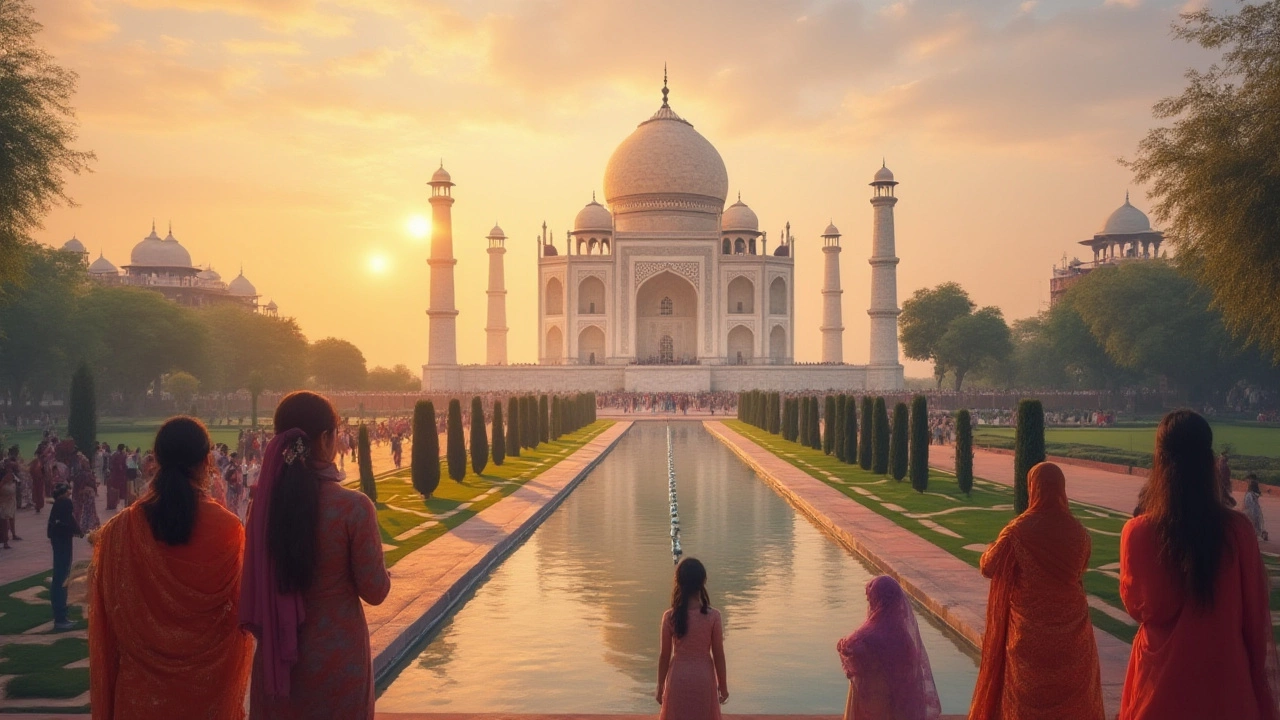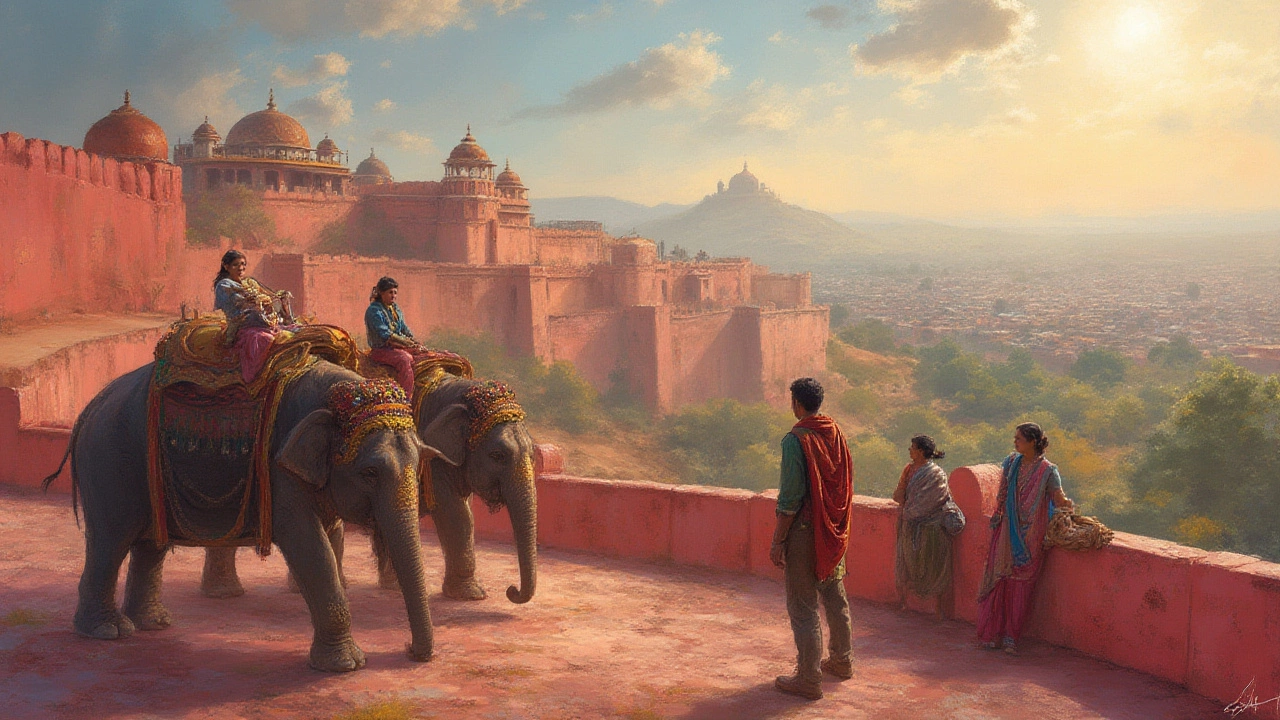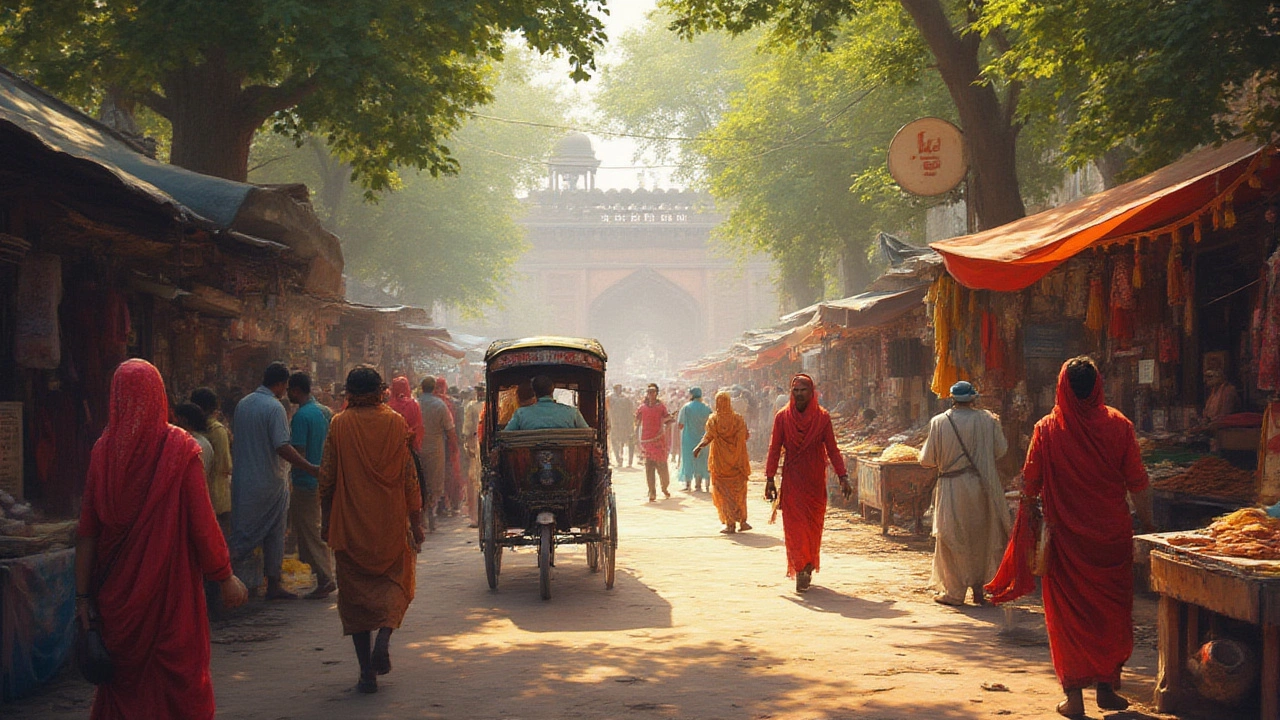Tourists in India don’t just follow the crowd; they chase a specific triangle etched onto every explorer’s mind. The Golden Triangle—nope, nothing to do with treasure hunts or ancient myths. This is the dynamic circuit of Delhi, Agra, and Jaipur. It's the fastest way to see India’s royalty, romance, and riotous street life—each city feels like a different world, just a few hours apart. If you draw lines from Delhi to Agra to Jaipur and back to Delhi, you get a near-perfect triangle that’s become legendary among travelers. But this triangle isn’t a tourist trap in the boring sense. It’s an energy trap, pulling you into color, spice, chaos, and calm, often in the same afternoon. Miss it, and you’ll always wonder 'what if?'.
Understanding the Golden Triangle: Where, What, and Why
If you look for the Golden Triangle on Google Maps, you’ll spot three dots: Delhi at the corner up north, Agra hanging southeast, and Jaipur resting out west in Rajasthan. Connect them, and there’s your answer to 'Where is the Golden Triangle in India?' You’ll travel about 720 kilometers (450 miles) to complete the loop—not too far, but every stretch is packed with story and spectacle. It’s not a golden triangle only because of geography. Each city is a treasure, drawing more than 1.5 million international tourists a year, according to the Ministry of Tourism. This triangle has history, vibrant food, shopping madness, and actual palaces, forts, and, yes, that dazzling white marble icon—the Taj Mahal.
Delhi is where everything begins. Here you can walk through the Red Fort, haggle in Chandni Chowk bazaars, snap photos at India Gate, and jump straight from ancient Mughal tombs to the glass-and-chrome malls of modern India. Then there’s Agra, where the Taj Mahal isn’t just a monument—it’s a love story in stone. But Agra is more than its famous mausoleum. You’ll find the Agra Fort, built mostly of red sandstone — a citadel that tells stories of emperors and intrigue. Not far away is the abandoned city of Fatehpur Sikri, which for fifteen glorious years was the Mughal capital, until water ran out, forcing the emperor to move out. Rounding off the triangle is Jaipur, Rajasthan’s 'Pink City.' Pink because Maharaja Ram Singh painted it that way in 1876 to welcome England’s Prince Albert, and the color stuck. Jaipur’s street-life is wild, markets are crammed with textiles and jewelry, and the Amber Fort on a hillside will have you pretending you’ve walked into a movie about kings and elephants.
So why go for this route first? It’s efficient. You get the best taste of India’s north in one trip. Great rail and road connections make it easy. There’s comfort—plenty of hotels from backpacker budget to full-blown royal palaces-turned-hotels. It’s safe for solo travelers, families, and groups. And honestly, you won’t find a better concentration of UNESCO sites within just a few days of traveling anywhere else in India.

Planning Your Golden Triangle Journey: Itineraries, Transport & Tips
Now, here’s what you really want, right? How do you actually travel the Golden Triangle? Most people start in Delhi, catch a train or hire a car to Agra, then swing west to Jaipur before looping back. You could rush through in four days, but that misses the magic. Spend at least one day in each city—better yet, linger for two or three. The winter months (October to mid-March) are sweet—cool, dry, with blue skies. Summer? Be ready to sweat or dodge monsoon showers.
Getting around is half the fun. The Shatabdi Express whisks you from Delhi to Agra in just under two hours. If you’re game for real Indian travel, go for the trains: they’re fast, efficient, and let you meet everyone from businessmen to families with boxes of homemade rotis. Buses are cheap and hassle-free if you want to see the countryside. Car rentals with drivers are wildly popular—about 80% of foreign visitors book this way, official tourism stats say. It takes about four hours from Delhi to Agra, and another four to six from Agra to Jaipur, depending on cows, camels, and random wedding processions along National Highway 21.
If you’re short on time, luxury trains like the Palace on Wheels give you a slow-lane taste of royal life, complete with gourmet food and plush cabins. On the flip side, plenty of budget travelers swear by local hostels for the camaraderie and tips you’ll never find in guidebooks. Keep cash handy (ATM lines can be long in the old towns). Make hotel bookings in advance, especially during festival season. Carry light scarves for sudden visits to temples, and don’t forget a portable charger for your phone or camera—trust me, you’ll be taking photos nonstop.
Table time! Here’s a basic comparison of travel times and must-see landmarks for each city.
| Route | Usual Travel Time | Must-See Landmarks |
|---|---|---|
| Delhi-Agra | 2 hrs (train), 4 hrs (car) | Red Fort, India Gate, Humayun's Tomb |
| Agra-Jaipur | 4-6 hrs (car/train) | Taj Mahal, Agra Fort, Fatehpur Sikri |
| Jaipur-Delhi | 5 hrs (car), 4.5 hrs (train) | Amber Fort, Hawa Mahal, City Palace |
One pro tip: hire local guides at each city gate. They know all the hidden rooftop cafés in Old Delhi and the best time to photograph the Taj without crowds. Jaipur’s bazaars are intense—let a local steer you to the best textile bargains. Traveling alone? You won’t be. Tons of travelers, Indian and foreign, trace this route every single day. Download an India train app, carry ID (passport copies are fine), and snag bottled water everywhere. Stay away from street food if your tummy isn’t used to India’s spicy kick, though samosas at a busy stand are hard to resist.

Unveiling the Best of the Golden Triangle: Experiences Beyond the Sights
Okay, you’ve seen the landmarks, but the Golden Triangle is more than photo ops. Delhi is a crash course in old vs new India. Wake up with morning prayers at the Jama Masjid, then bike through narrow alleys where rickshaws jam the way. Food, obviously, is everywhere—try kachori from a street cart or tuck into Mughlai kebabs. Don’t miss the quirky Lotus Temple, where silence is a principle, or the madcap pace of Connaught Place where India shops, eats, and meets under swirling fans.
Agra is where history feels extra heavy. Everyone comes for the Taj, so go early at sunrise or late in the afternoon for softer light and fewer selfie sticks. Story goes that Shah Jahan was imprisoned in Agra Fort, looking at the Taj Mahal and the tomb of his beloved Mumtaz until he died. Hit the lesser-known 'Baby Taj' (Itmad-ud-Daulah’s Tomb)—fewer people, just as pretty in its marble filigree. Evenings in Agra get you closer to real life. Try a rooftop café with a Taj view, and if you have time, visit nearby villages where marble carving is a family tradition stretching back centuries.
Jaipur is where things get really Technicolor. The Amber Fort rises from the Aravalli hills like a fairy castle, and the Sheesh Mahal inside sparkles from mirror mosaics that reflect even a tiny lamp into infinite stars. Take a hot-air balloon ride at sunrise for jaw-dropping views, or lose yourself in the bazaars: Tripolia Gate for bangles, Johari Bazaar for jewelry. Jaipur’s City Palace has a museum packed with costumes, armory, and even historic elephant saddles, making you realize just how royal life here once was. End your nights with Rajasthani folk dances and thali dinners—rice, breads, veggies, and spicy sauce arranged in little metal bowls like a painter’s palette.
Feeling adventurous? Add hidden gems between the triangle points. Bharatpur Bird Sanctuary, just off the road from Agra to Jaipur, draws migratory birds from Siberia every winter—more than 370 species, from pelicans to painted storks. Neemrana Fort-Palace lies halfway to Delhi, and you can zipline over the battlements before a candle-lit dinner within 15th-century walls. Safety is rarely an issue, but stick to busy routes at night and ask hotels about verified taxis to avoid rip-offs. Women travelers often find these cities friendlier than the hype implies, but dress modestly—long pants or skirts work in both old neighborhoods and temples.
Don’t think the Golden Triangle has to be expensive. Backpackers spend as little as $25 a day, eating street food and sleeping in hostels. Splurging types book palace suites for $400 a night with gardens, spas, and butler service. Luggage? Carry less and buy what you need—textiles, scarves, leather, and block-print shirts are irresistible in Jaipur's bazaars. Document everything (a phone camera is fine), but practice 'digital detox' for at least an afternoon—soak up the chaos, sound, and color with your own eyes, not through a screen. For many, a trip through India’s Golden Triangle is the beginning of an obsession with the country; you’ll overhear travelers plotting their next journeys over late-night chai more than once before you head home.
